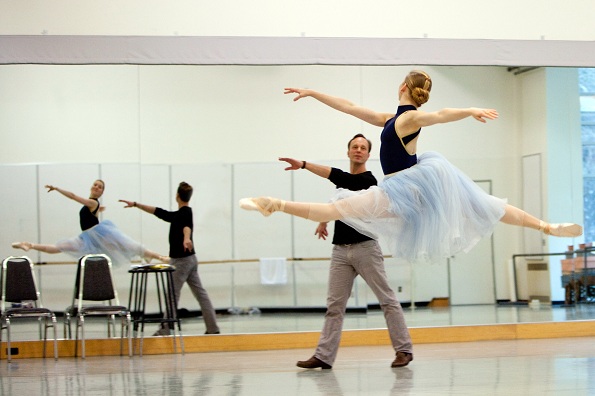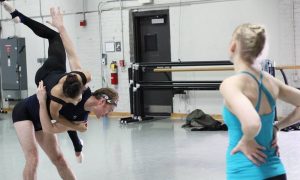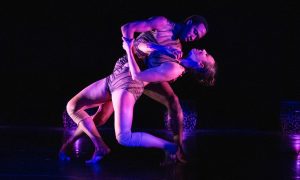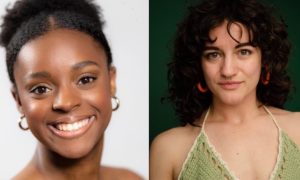What it Takes to Be a Dance Company’s Artistic Director.
By Laura Di Orio.
When an audience sees a performance, it notices the dancers, costumes, lighting, sets and music. But the driving force behind it all, is the artistic director. In a dance company, the artistic director’s role is to fuse all the business and artistic elements of the company and its productions to ensure they coalesce to portray the group’s vision. Dance Informa speaks with artistic directors from three established companies to find out what’s involved in being at the helm.
What qualities does it takes to be an artistic director of a dance company?
David McAllister, Artistic Director, Australian Ballet
I think that an artistic director needs to be a good communicator but an equally good listener. I believe that your motivation should be to facilitate the company to be the best it can be, rather than trying to big-note yourself. I love the fact that the company is the star and I am there to keep that flame burning as brightly as possible. You have to care about the people you work with and have a big ambition for the company you run. Both competing forces somehow need to be balanced.
Peter Boal, Artistic Director, Pacific Northwest Ballet, Seattle
Patience and perseverance. Clear vision helps, too.
Nan Giordano, Artistic Director, Giordano Jazz Dance Chicago
Your skills need to be very extensive and cover anything from finding the choreographers or being in rehearsal to working with the board – you have to wear a lot of hats. You have to be efficient and organized. You need to be an inspirational leader. That’s part of what I do – inspire. How I live is how I operate our company – good energy, high energy.
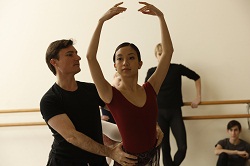
David McAllister & Karen Nanasca, The Australian Ballet. Photo by Jeff Busby
What do you look for in dancers for your company? Is it more than just dance ability? Is character a part of your decision?
Peter Boal
There are a few common denominators I look for in dancers, but what inspires me is the individuality of each dancer. Versatility and an ability to connect with the audience are also key.
Nan Giordano
Of course they have to be a wonderful dancer, but we look for a very specific type of person and the energy they exude during the audition process. We look at the whole picture.
How do you choose your season repertoire?
Nan Giordano
We want to be the trendsetters, to be ahead of the pulse. I like working with new cutting edge choreographers who are just being discovered. We try to do three new works a year. Then I look back at the rep we have and see how it’s all going to tie together. For the dancers, it’s important to keep them challenged and interested, and it’s important to me that they like the rep they’re doing. The more they like it, the more successful the piece will be.
Peter Boal
I look for a balance of respecting the traditions that PNB was built on and adding to the repertory by building collections of works by relevant choreographers – both world premieres and/or new works to PNB.
David McAllister
In an organisation where around 70 percent of our budget comes from box office, the audience needs to be front of mind, but I believe that context is always the way to take an audience on a journey. If you only mount works that are proven to be popular, then the audience never has an opportunity to be surprised and sometimes enlightened by something they may not have seen otherwise.
How do you keep inspired?
David McAllister
By surrounding yourself with wonderful people who challenge and motivate you to be better. The best piece of advice I got from someone when I became Artistic Director was to always employ people who are cleverer than you and could do your job. It is a great way in which to work as you can workshop solutions to problems that on your own seem insurmountable.
Peter Boal
I travel as often as possible to see new choreography and to see other ballet companies. Included in these travels is always a trip to the art museum of whatever city I’m in. It helps keep me inspired.
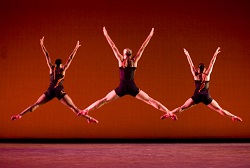
Giordano Jazz Dance Chicago. Photo by Cheryl Mann
How do you keep your dancers motivated?
That is the million-dollar question! I would say to try to provide a respectful, creative and supportive environment in which to work and a repertoire that inspires and is artistically diverse. It is integral to keep the flow of communication as open and transparent as possible and to be honest and timely with your feedback to the dancers individually and as a group.
We have a lot of fun together. They’re more than just employees. It’s a supportive environment. I feed them energy, they feed me energy.
Peter Boal
I think the repertory is a great motivator for the dancers. I also make a concerted effort to bring in coaches, stagers and choreographers who I know the dancers will benefit from working with.
What else should people know about being an artistic director?
Nan Giordano
You want to create a good arena so that you can create something great together. Our world really needs beauty, whether it’s on stage or in the classroom, so you need to focus on the positive.
David McAllister
Being an artistic director is the best job in the world. Each day is filled with unseen challenges and joys. To sit in an auditorium and see a dancer outperform their own expectations or to witness the premiere of a work that started with a conversation with the artists involved is a pleasure that has no price.
Top photo: Pacific Northwest Ballet Artistic Director Peter Boal with principal dancer Carla Körbes in a rehearsal for Boal’s new staging of Giselle. Photo by Angela Sterling


